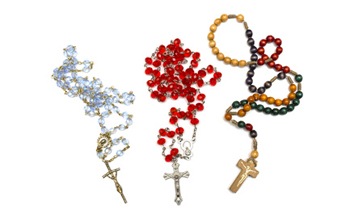God’s design: are rosaries eligible for protection?
DESIGNS AND COPYRIGHTS IN ITALY
In a case concerning copycat rosaries, the Italian Supreme Court has annulled a decision that denied protection as industrial designs for rosaries and other industrially produced religious objects.
Just in time for the inauguration of the Jubilee of Mercy, due to take place in Rome in two weeks’ time, the Italian Supreme Court has ruled that design and copyright provisions of law apply to industrially produced objects of worship. The case, concerning copycat rosaries, also touches on the criteria for the assessment of unfair competition.
Facts in the case
Ghirelli S.r.l., an Italian manufacturer of rosaries and other religious objects, accused L.A.L. S.r.l. , a competitor, of copying some of Ghirelli’s products, including several rosaries. The complainant claimed infringement of copyright and design rights as well as unfair competition.

Elibigle for protection as industrial designs, says Italian Supreme Court
The District Court of Venice held in favour of the unfair competition claim, but took the view that religious objects are not eligible for protection as industrial designs, and that copyright protection applies only when the product’s design can be physically separated from the actual object it is used on. The Court of Appeal of Venice confirmed both holdings.
The Supreme Court’s decision
In its decision No. 22118 of 29 October 2015, the Supreme Court censored the Court of Appeal of Venice, finding that neither of the lower courts’ decisions had explained why provisions on industrial designs should be inapplicable to religious objects that are indeed produced industrially.
As for the issue of copyrights, the Supreme Court pointed out that the provision of Italian copyright law which once reserved copyright protection only for designs that could be separated from the products they were used on was overruled in 2001, when Italy implemented European Union laws on design protection.
Under the updated provision of Italian copyright law, copyright protection applies to designs that possess creative character and artistic value per se.
Regarding the claim of unfair competition, the Supreme Court found that the lower courts’ decisions had failed to assess whether the defendant had consistently and systematically followed the tracks of a competitor by imitating not only the competitor’s protected products, but its major business initiatives.
The Supreme Court annulled the decision of the court of appeal and ordered it to issue a new one according to the following guidelines: 1) the creative character and artistic value of a design must be evaluated taking into account the available circumstantial evidence and, if necessary, the opinion of experts of the relevant sector, and 2) a finding of unfair competition requires proof that a competitor’s activities have been systematically plagiarised over time, by adopting and exploiting, in whole or in part, every initiative, study or research, against the rules of professional correctness.
26 November 2015
